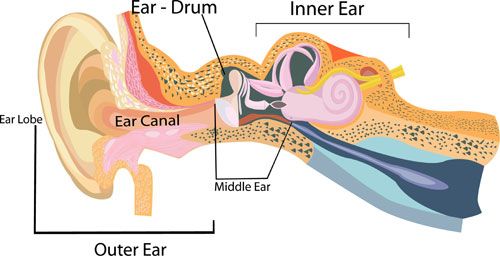Day One - What Does It Mean to Be Deaf or Hard of Hearing?

Did You Know?
As described by the CDC, “hearing loss can happen when any part of the ear or auditory (hearing) system is not working in the usual way”. There are four different types of hearing loss: conductive, sensorineural, mixed hearing loss, and auditory neuropathy spectrum disorder. To better understand the different types of hearing loss, it is important to learn how the human ear works. For a detailed description, visit the CDC’s website.
There are varying levels of hearing loss:
Mild Hearing Loss - A person with a mild hearing loss may hear some speech sounds but soft sounds are hard to hear.
Moderate Hearing Loss - A person with a moderate hearing loss may hear almost no speech when another person is talking at a normal level.
Severe Hearing Loss - A person with severe hearing loss will hear no speech when a person is talking at a normal level and only some loud sounds.
Profound Hearing Loss - A person with a profound hearing loss will not hear any speech and only very loud sounds.

Hearing Technology
Someone who is deaf or hard of hearing can often benefit from hearing technology, like cochlear implants and hearing aids. A hearing aid amplifies sound, and can be most beneficial for someone with mild – severe hearing loss. Most people with hearing loss are candidates for and can benefit from hearing aids.
A cochlear implant bypasses the cochlea (inner ear) and stimulates the auditory nerve through device that is implanted. To be a candidate for a cochlear implant, a person usually has a severe to profound hearing loss and does not benefit from hearing aids.
In The News

Read this touching story about a family in Newton, MA who recently welcomed their baby girl. When the family learned she was deaf, members of the neighborhood learned sign language.
Today's Challenge

Often when someone has hearing aids or cochlear implants, they will have earmolds to help with accessing sound and keeping the device on the ear. Today, practically any color or design is possible. What would you choose for your ear mold? See an example of options here. Post your answers on our Facebook page.





